Limburg mijn Vaderland ("Limburg my Fatherland") or Limburg, mijn vaderland ("Limburg, my fatherland") is the official anthem of the two provinces of Limburg, Dutch Limburg and Belgian Limburg. [1] [2]
Limburg mijn Vaderland ("Limburg my Fatherland") or Limburg, mijn vaderland ("Limburg, my fatherland") is the official anthem of the two provinces of Limburg, Dutch Limburg and Belgian Limburg. [1] [2]

The anthem was written by the schoolteacher Gerard Krekelberg in 1909. The music was composed by Henri Tijssen . Tijssen also wrote the anthem of the city of Roermond, Oud en trouw Roermond.
The fact that Krekelberg's lyrics are in Dutch can be seen as surprising. It is all the more surprising that he put quite a lot of emphasis on Limburg being united, which was not the case at the time - and arguably still is not. The Limburgish language was - and still is - very much a unifying factor in a culturally diverse area. Around the time that Krekelberg wrote his poem, Dutch was of little importance in daily life in Limburg. Everything was done in Limburgish. In the 19th century this was even more the case. Newspapers were either in German or French. In various parts of Limburg, German was the language used in churches and schools. In Maastricht, a largely Francized city due to its historic ties with Liège, education, theatre and 'polite' conversation and correspondence were in French.
The lyrics describe the natural beauty of Limburg and the noble nature of its people. Usually only the first stanza is sung, sometimes also the second one. The third stanza talks about the "beautiful language of the ancestors", "despising foreign pomp" and "preferring our own way of life". The last stanza, about the strong ties with the Netherlands and the House of Orange, is for obvious reasons never sung in Belgium.
Waar in 't bronsgroen eikenhout, 't nachtegaaltje zingt, | Where the little nightingale sings in the bronze green oak [forest], |

The "Deutschlandlied", officially titled "Das Lied der Deutschen", has been the national anthem of Germany either wholly or in part since 1922, except for a seven-year gap following World War II in West Germany. In East Germany, the national anthem was "Auferstanden aus Ruinen" between 1949 and 1990.
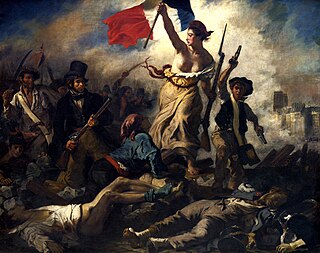
A homeland is a place where a national or ethnic identity has formed. The definition can also mean simply one's country of birth. When used as a proper noun, the Homeland, as well as its equivalents in other languages, often has ethnic nationalist connotations. A homeland may also be referred to as a fatherland, a motherland, or a mother country, depending on the culture and language of the nationality in question.
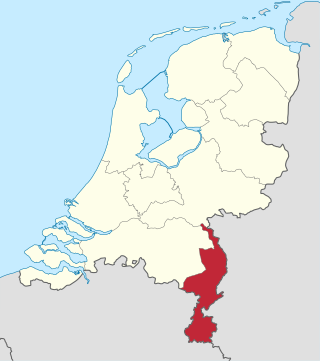
Limburg, also known as Dutch Limburg, is the southernmost of the twelve provinces of the Netherlands. It is bordered by Gelderland to the north and by North Brabant to its west. Its long eastern boundary forms the international border with the state of North Rhine-Westphalia in Germany. To the west is the international border with the similarly named Belgian province of Limburg, part of which is delineated by the river Meuse. To the South, Limburg is bordered by the Belgian province of Liège. The Vaalserberg is on the extreme southeastern point, marking the tripoint of the Netherlands, Germany and Belgium.

The Meuse or Maas is a major European river, rising in France and flowing through Belgium and the Netherlands before draining into the North Sea from the Rhine–Meuse–Scheldt delta. It has a total length of 925 km.

"Wilhelmus van Nassouwe", usually known just as "Wilhelmus", is the national anthem of both the Netherlands and its sovereign state, the Kingdom of the Netherlands. It dates back to at least 1572, making it the oldest national anthem in use today, provided that the latter is defined as consisting of both a melody and lyrics. Although "Wilhelmus" was not recognized as the official national anthem until 1932, it has always been popular with parts of the Dutch population and resurfaced on several occasions in the course of Dutch history before gaining its present status. It was also the anthem of the Netherlands Antilles from 1954 to 1964.

Limburg, also known as Belgian Limburg, is a province in Belgium. It is the easternmost of the five Dutch-speaking provinces that together form the Region of Flanders, one of the three main political and cultural sub-divisions of modern-day Belgium.

Roermond is a city, municipality, and diocese in the Limburg province of the Netherlands. Roermond is a historically important town on the lower Roer on the east bank of the river Meuse. It received town rights in 1231. Roermond's town centre has become a designated conservation area.
A national anthem is a patriotic musical composition symbolizing and evoking eulogies of the history and traditions of a country or nation. The majority of national anthems are marches or hymns in style. American, Central Asian, and European nations tend towards more ornate and operatic pieces, while those in the Middle East, Oceania, Africa, and the Caribbean use a more simplistic fanfare. Some countries that are devolved into multiple constituent states have their own official musical compositions for them ; their constituencies' songs are sometimes referred to as national anthems even though they are not sovereign states.

Limburgish, also called Limburgan, Limburgian, or Limburgic, is a West Germanic language spoken in Dutch Limburg, Belgian Limburg, and neighbouring regions of Germany.
"Ons Gelderland" is the anthem of the province of Gelderland in the Netherlands.
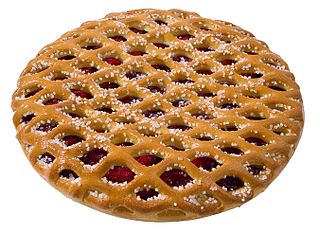
Limburgse vlaai is a pastry consisting of dough and a filling, traditionally associated with the provinces of Limburg found both in the Netherlands and Belgium, as well as parts of Germany across the border.
Southeast Limburgish is a cover term for the Ripuarian dialects spoken in Dutch Limburg.
Kris Cuppens is a Belgian actor and writer.
Dutch dialects are primarily the dialects that are both cognate with the Dutch language and spoken in the same language area as the Dutch standard language. They are remarkably diverse and are found within Europe mainly in the Netherlands and northern Belgium.
Maastrichtian or Maastrichtian Limburgish is the dialect and variant of Limburgish spoken in the Dutch city of Maastricht alongside the Dutch language. In terms of speakers, it is the most widespread variant of Limburgish, and it is a tonal one. Like many of the Limburgish dialects spoken in neighbouring Belgian Limburg, Maastrichtian retained many Gallo-Romance influences in its vocabulary.

The Meuse–Rhine Euroregion is a Euroregion created in 1976, with judicial status achieved in 1991. It comprises 11.000 km2 and has around 3.9 million inhabitants around the city-corridor of Aachen–Maastricht–Hasselt–Liège. The seat of the region has been in Eupen, Belgium since 1 January 2007. Within a wider context, the region is part of what is called the Blue Banana European urbanisation corridor.
South Limburg is both a COROP (statistical) region as well as a landstreek (area) of the Netherlands located in the province of Limburg. The Dutch term landstreek, literally translated "land area/region", means that the area is not an administrative region but an area that displays cohesion with regard to culture and landscape. With regards to South Limburg this deals with its hilly landscape, especially in the Heuvelland region, sunken lanes, an abundance of castles, and the regional language Limburgish spoken by a significant part of the population alongside Dutch. The region also contains the highest point above sea level in mainland Netherlands, the Vaalserberg being 322.5 metres (1,058 ft) above sea level.
Jacob Hiegentlich was a gay Dutch poet of Jewish descent. He committed suicide in 1940, at age 33, days after the German invasion of the Netherlands.
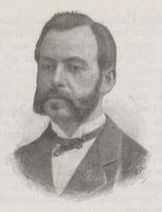
Hieronymus Franciscus (Jerôme) Lambrechts was a Dutch politician.
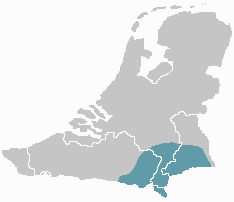
South Low Franconian is a dialect group of the continental West Germanic dialect continuum. South Low Franconian varieties are spoken in Belgium, Germany and the Netherlands and are commonly referred to as "Limburgish" in Belgium and the Netherlands. Its varieties have been traditionally considered dialects of Dutch in the Low Countries and dialects of German in Germany, nevertheless they form a distinct dialect group. In the Netherlands, Limburgish has gained recognition as a regional language.